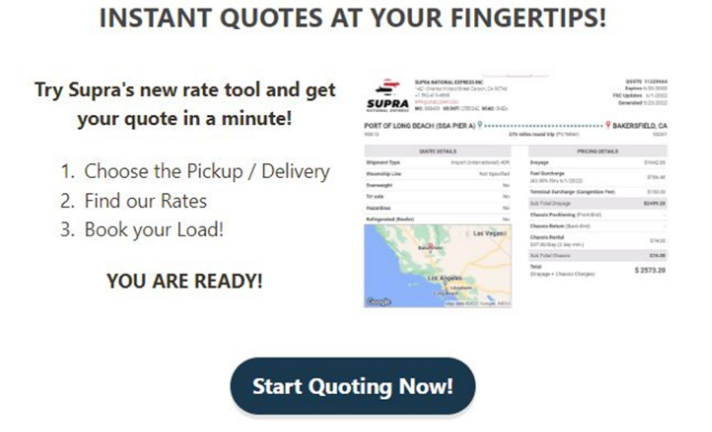The term drayage is the transport of cargo from an ocean port to a location. “The first mile” is sometimes used to describe moving freight across short distances. Drayage services are vital for the short haul, long haul, door-to-door deliveries, and final destination for pier drayage. Because it enables shipping companies to move their goods across greater distances more affordably, it is a crucial part of the logistics systems. Without drayage trucking, the shipping process would be affected, and companies would be unable to move items from one step to the next.
Drayage is a form of shipping that is growing exponentially in the intermodal association of North America and globally. PRNewswire predicts that the “drayage services market size will grow by USD 2.90 billion.” The time is now to learn and adapt to this strategy in the logistics industry.
Drayage Trucking in Today’s Supply Chain
Services for drayage are crucial to the supply chain. Drayage trucking keeps the supply chain running smoothly by transporting containers from ships to hubs, terminals, or other trucks en route to their next destination. Drayage trucking is the only method available for moving drayage loads from ocean ports or intermodal terminals to the following mode of transportation. It connects the modes of transportation.
The impact of technology on drayage trucking is tremendous. It allows leveraging data, provides analytics and supply chain optimization, and machine learning. These tasks are time-consuming as human functions. However, they take up very little time for artificial intelligence.
Advantages of Drayage Trucking for Your Business
A drayage trucker creates faster and more efficient transportation of goods, which helps reduce import and export costs and overall costs and improves operational efficiency. When working with a 3PL, the number of providers you need to ship from point A to B decreases, putting them in a unique position to negotiate costs. Drayage is often more cost-effective in both time and money.
A 3PL has secure warehousing and distribution when handling and moving cargo that is time sensitive. This enhances safety, security, compliance, and control. A drayage trucker is also a fully trained personnel with the expertise and experience to handle your specific goods and transport needs.
With these combined efforts, there is an obvious advantage for environmental benefits. Using fewer modes of transportation lessens the ecological footprint left behind by the trucking industry.
Challenges and Solutions in Drayage Trucking
Congestion at ports and terminals is a current challenge in drayage. The ports are overloaded, but leveraging a drayage trucker will improve this challenge. Driver shortages are another common challenge in drayage trucking and the shipping industry in general. However, with better treatment and competitive pay, hopefully, the drayage truck driver shortage will no longer be a concern. Also, ensuring that transporters are fully trained in compliance and regulations will help drivers and companies maintain compliance.
Supra National Express invests in current assets and logistics software technology to stay on top of current challenges in the industry. This allows for real-time tracking for logistics and flexible and responsive operations. Their commitment to innovation is unmatched, using a cross-decking system to create a just-in-time shipping operation.
Choosing the Right Drayage Trucker for Your Business
Partnering with an asset-based 3PL like Supra National Express will change your business. This collaboration with a technology-driven and innovative partnership will provide your company with strategic solutions to your supply chain needs and demands.
A few key factors to consider when selecting a drayage trucker are the ability to store goods, communication, multimodal and intermodal shipping, and experience. Research a company thoroughly before making a decision. Ensure that all your business needs and expectations will be met.
Streamline Drayage Trucking Needs With Supra National Express
Drayage is an essential aspect of logistics. This service involves the short-distance shipping of merchandise from one place to another and plays a vital role in the flow of the modern supply chain. It enhances safety, security, compliance, and control while navigating the challenges of the shipping industry.
Choosing the right drayage trucker for your business can seem overwhelming. Remember to consider key factors such as communication and transparency. Request a drayage quote with Supra National Express’ new DrayMaster software today, and put your drayage on autopilot!

 Become A Partner Carrier
Become A Partner Carrier